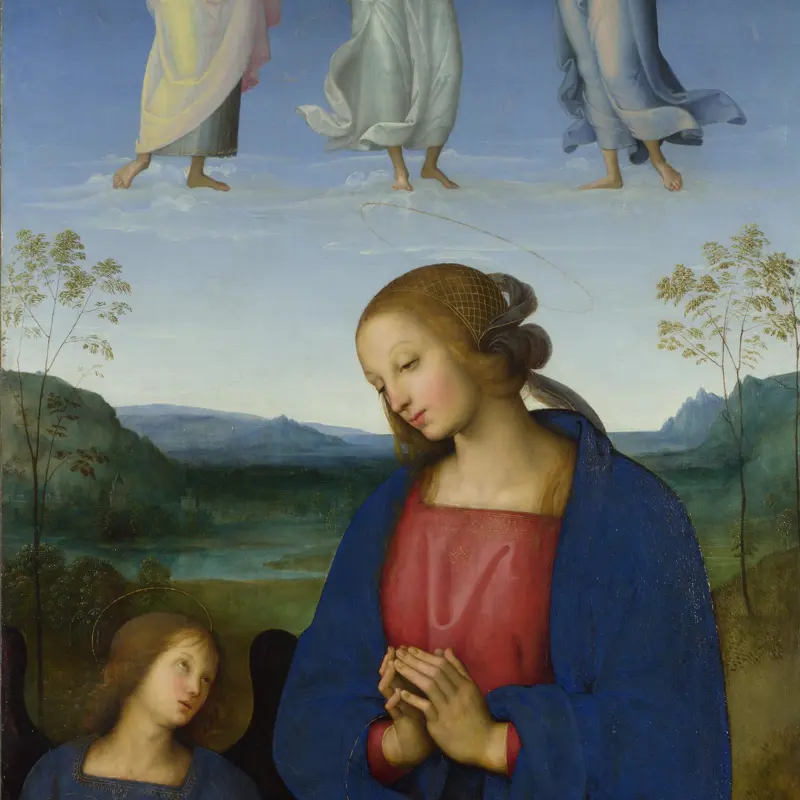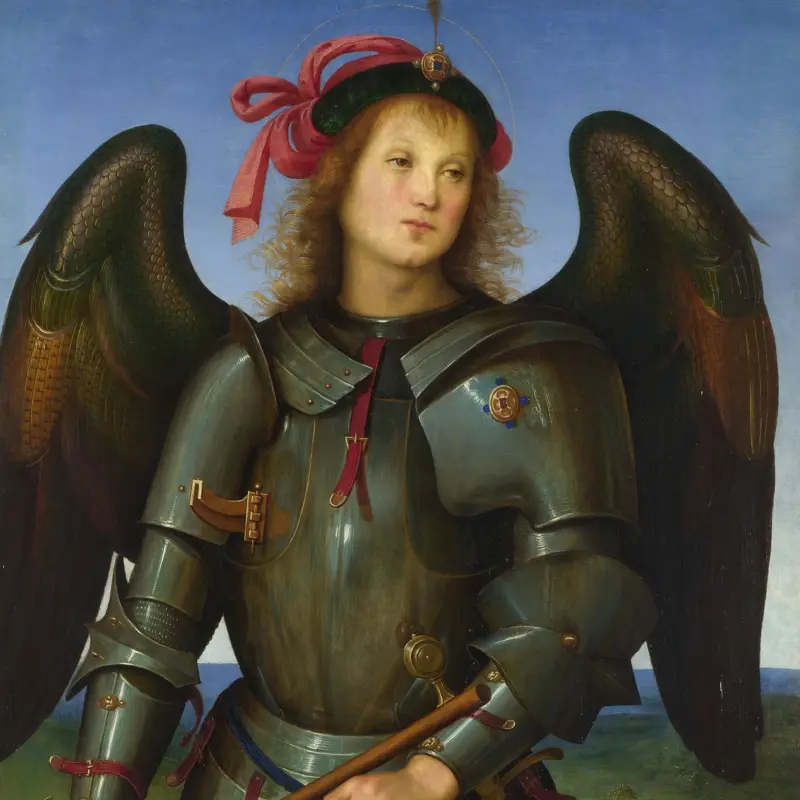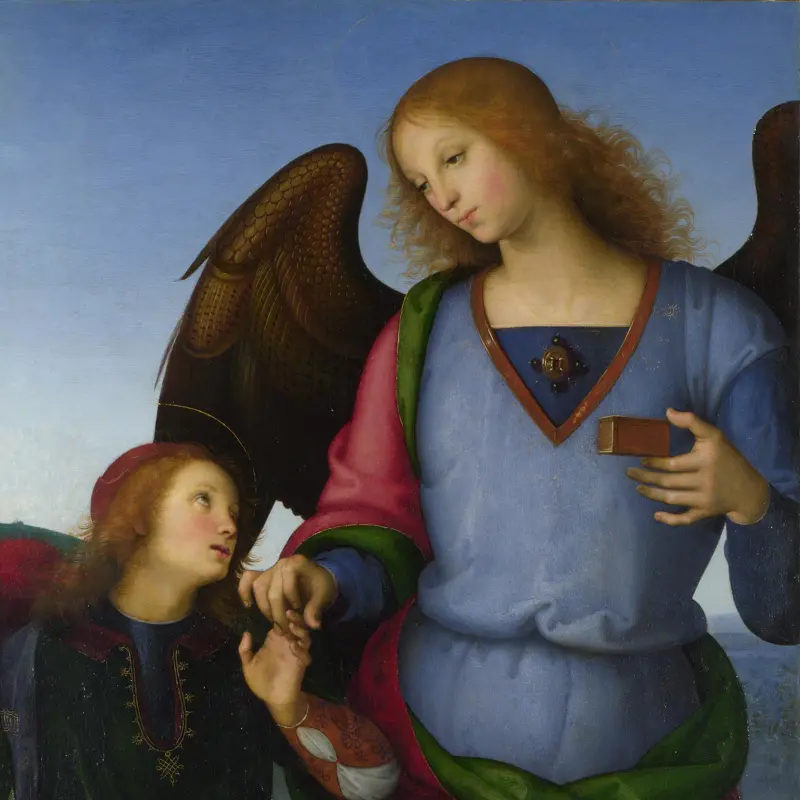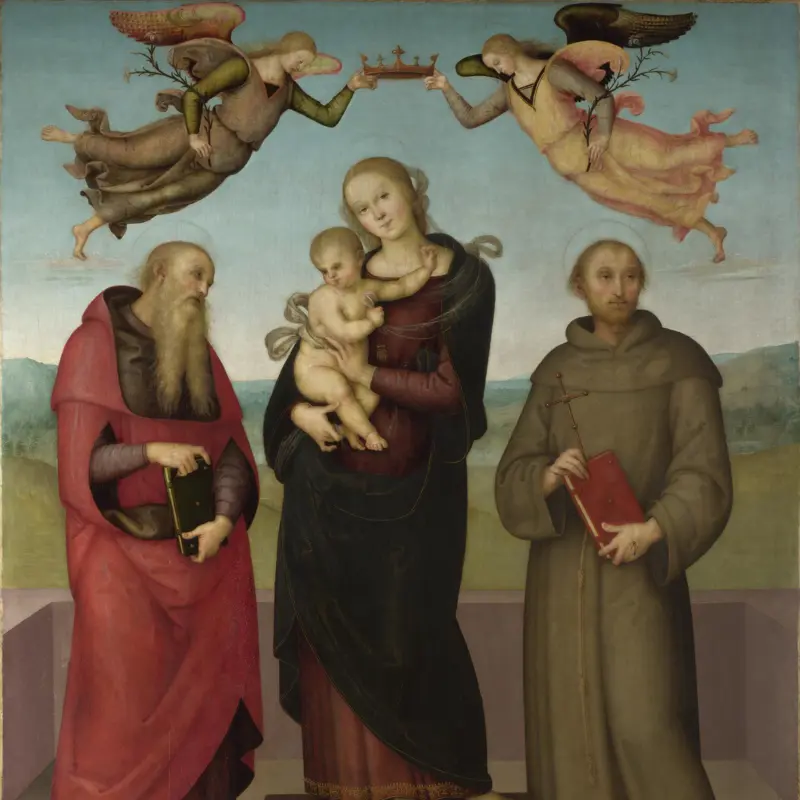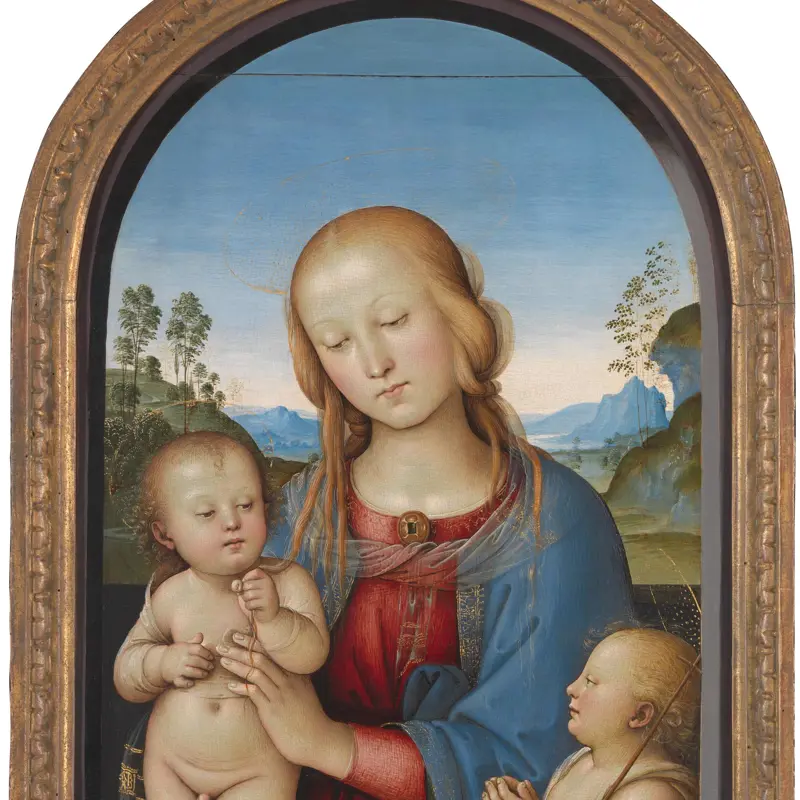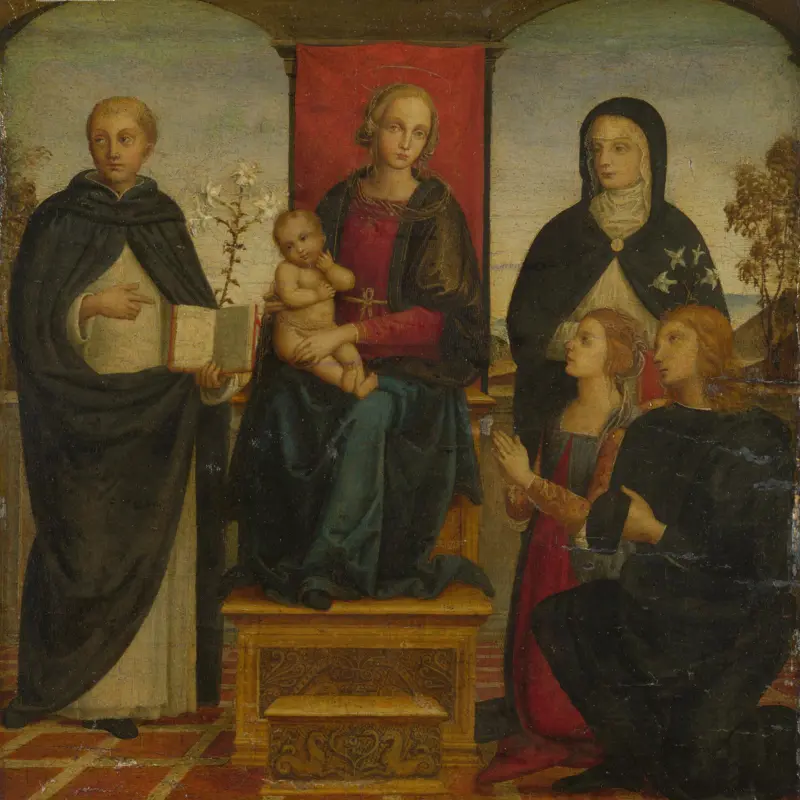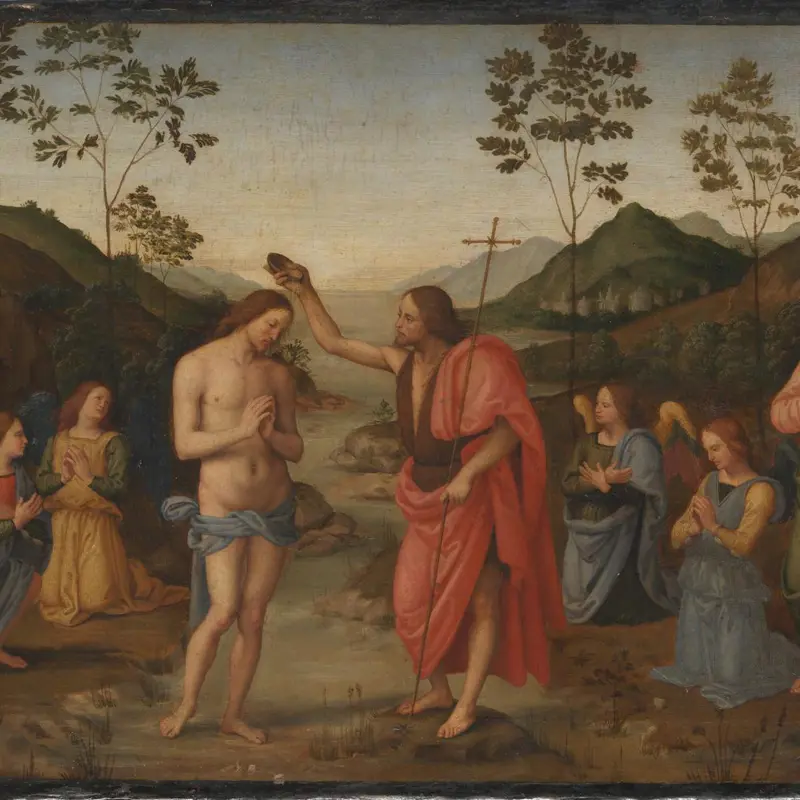Pietro Perugino, 'The Archangel Raphael with Tobias', about 1496-1500
About the work
Overview
This panel is one of three that come from the lower tier of an altarpiece made for the Duke of Milan; the other two are also in the National Gallery’s collection.
The Archangel Raphael is the hero of the Book of Tobit, which is part of the Roman Catholic Bible. Tobit sent his son Tobias on a long journey, and Raphael was sent by God to accompany the boy. Tobias holds a freshly caught and gutted fish; Raphael had instructed him to keep its heart, liver and gall as they could be used as ointment to cure blindness and burnt to drive away evil spirits. The archangel holds the precious organs in a little box.
The pair were joined in their travels by Tobias’s dog. We can only see its head here at the bottom of the panel, as the lower edge – like that of the other panels – was cut down in the eighteenth century.
Key facts
Details
- Full title
- The Archangel Raphael with Tobias
- Artist
- Pietro Perugino
- Artist dates
- Living 1469; died 1523
- Part of the group
- Three Panels from an Altarpiece, Certosa
- Date made
- About 1496-1500
- Medium and support
- Oil on wood (probably poplar)
- Dimensions
- 113.3 × 56.5 cm
- Acquisition credit
- Bought, 1856
- Inventory number
- NG288.3
- Location
- Room 61
- Collection
- Main Collection
- Frame
- 21st-century Replica Frame
Provenance
Additional information
Text extracted from the ‘Provenance’ section of the catalogue entry in Martin Davies, ‘National Gallery Catalogues: The Earlier Italian Schools’, London 1986; for further information, see the full catalogue entry.
Exhibition history
-
2023Italy's best maestro. Perugino in his dayGalleria Nazionale dell'Umbria4 March 2023 - 11 June 2023
Bibliography
-
1951Davies, Martin, National Gallery Catalogues: The Earlier Italian Schools, London 1951
-
1986Davies, Martin, National Gallery Catalogues: The Earlier Italian Schools, revised edn, London 1986
-
2001
C. Baker and T. Henry, The National Gallery: Complete Illustrated Catalogue, London 2001
About this record
If you know more about this work or have spotted an error, please contact us. Please note that exhibition histories are listed from 2009 onwards. Bibliographies may not be complete; more comprehensive information is available in the National Gallery Library.
Images
About the group: Three Panels from an Altarpiece, Certosa
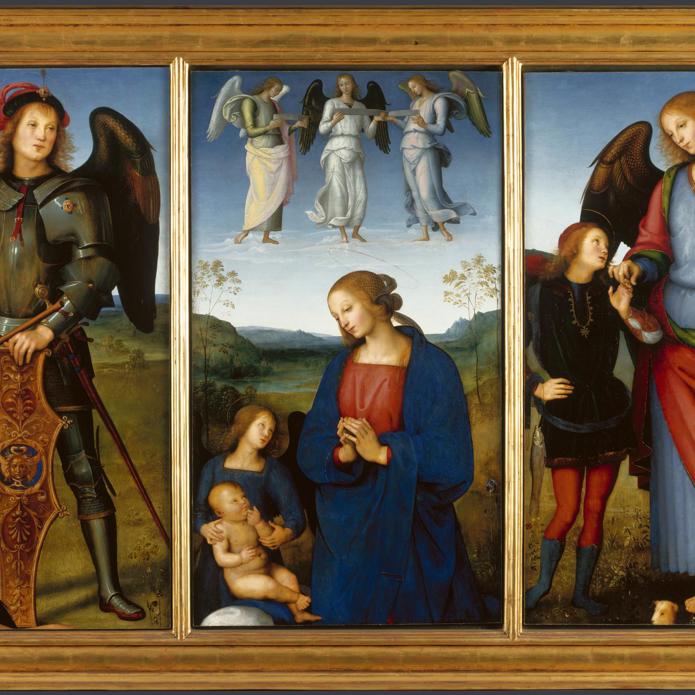
Overview
Perugino painted this altarpiece for the Duke of Milan, Ludovico Sforza. It stood in the side chapel dedicated to the Archangel Michael in the Carthusian monastery (also known as a charterhouse or certosa) in Pavia, a town outside Milan. The Duke was captured by invading French forces in 1499, and the altarpiece was completed in the early sixteenth century by two other painters: Fra Bartolommeo and Mariotto Albertinelli.
Our panels formed the lower tier of two in this large-scale construction. The upper tier showed the Annunciation: the Archangel Gabriel, on one panel, giving the Virgin Mary, on another panel, the news that she would conceive the son of God. Between these panels was an image of God in glory, which is still in the church.
The painting shows Perugino’s skill in working with oil paint. Because oil paint dries slowly, it is possible to blend different tones together to create subtle transitions, particularly evident here in the figures' flesh – their cheeks, for example, have a rosy blush.

